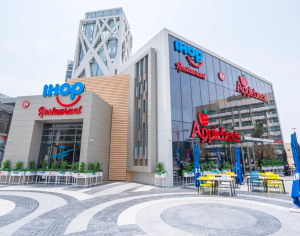At one stage it seemed globalisation was a juggernaut the pace of which would never slow, with brands homogenising all cultural difference away from our high streets. However, its progress has slowed in recent years as there has been an increasing understanding that the most successful brands are those that adapt to cultural differences rather than those that bulldoze through them. Glocalisation, where global companies adapt their products and services to the culture in which they are sold, has allowed them to make the most of cultural differences and franchised brands in particular can benefit hugely from the opportunity this presents.
With most franchises, it is generally assumed that a fixed and replicable model is the best approach, ensuring that a high quality of service is maintained across the board. But this only goes so far when one is trying to create a brand that will go the distance in a multitude of cultures. “It’s vital for a franchisor to change their franchise operation when they go international,” explains Euan Fraser, founder and managing consultant of AMO Consulting.
Daniel Spinath, founder and managing director of Crêpeaffaire, the crêpe franchise, built a multi-local element into its model from the get-go and he feels it is crucial to consider a franchise’s approach from the perspective of the market it is entering. “While the base model needs to largely be compatible with the host culture, it’s not one size fits all,” he says. Whether it’s product offering or service style, there is always the potential that regional expectations will affect a model’s success. “Trying to sell ham in Saudi Arabia or convince Spanish customers, who are widely used to table service, to come to the till area to place an order isn’t going to work.”
And it’s not just food outlets that will find international variations in their consumer base affecting their overall franchise model. “UK clothing retailers who franchise into markets south of the equator face the challenge of clothing people for a different season or changing their sizing for more petite Asian customers and colours for different markets,” says Fraser.
However, the degree to which a franchise might be required to tailor their offering to a foreign market may depend, to an extent, on the profile and familiarity that brand has in those markets.
“Where the franchisor is well known then they must meet the expectations that customers have experienced when they’ve come across them overseas,” says Fraser. An internationally recognisable brand like McDonald’s will cater to dietary requirements or preferences to an extent but there will still be a Big Mac on the menu in most countries. “A less well known brand will have no recognition from the customer – so they have to be [more] relevant to that culture,” he continues. “An ice cream retailer must have green tea flavoured ice cream in Japan.”
Whilst the nature of the adaptations may be small, the impact they can have is huge. “It’s quite simply the difference between live or die,” says Spinath. “I know of no concept which has successfully conquered a territory while disregarding local habits.” And it’s not just consumers who are likely to be put off by a poorly targeted offering: franchisees operating in the markets are likely to be clued up on what will be well received and what will fail in their territory. “Potential franchisees do their homework and are consumers too,” he says.
But given that every franchise stacks its success on a watertight model, one would be forgiven for thinking that sometimes there could be a tension between making this replicable and allowing room for regional variation. Fortunately Spinath feels this worry is unfounded. “I see no tension at all as long as the model is inherently scalable to the host culture and there’s an openness to follow consumer insights,” he comments.
As with any brand, there has to be a degree of consistency in the Subway range, ensuring customers get a high-quality meal irrespective of where they’re based. “The […] core menu is primarily the same no matter where in the world you are,” explains Peter Mompalao de Piro, PR specialist for Subway for Europe. But this isn’t to say it doesn’t adapt itself to the palates of consumers and cater its offering to best serve its clientele around the globe. “Subway prides itself on honouring local food preferences and adapts its menu and ingredients accordingly.”
Plenty of markets have unique tastes that the sandwich franchise has utilised. “The Skagenrora Sub available in Sweden features a unique Swedish creamy fish based product, while in Russia, they favour mushrooms and salmon as ingredients,” says de Piro. Meanwhile in areas such as India, where certain meats might not go down too well, substitutions have been made to better cater to local preferences, boosting the number of chicken and vege subs. “[The menu] includes classic Indian flavours such as the Chicken Tandoori to the more localised Chicken Seekh,” adds de Piro.”![]()

































